We did not go straight from Sid Caesar, the Rosenbergs, coonskin hats, Heartbreak Hotel, Speedy Alka Seltzer, Sputnik, hula hoops, and Tom Dooley to Twiggy, Valley of the Dolls, bell-bottoms, love-ins, Tiny Tim, and Hair—it just seems that way. In between the great Eisenhower yawn and the Nixon nightmare were a handful of seldom-recalled halcyon years marked by sleek fast-back cars (the Corvette Sting Ray was introduced in 1963, the Mustang a year later), feel-good TV shows like Dr. Kildare and Andy Griffith, and the crooning of Trini Lopez and the Singing Nun.
The early 60s marked a transitional time in more ways than one. Let’s call it the Era of Pentimento, a handful of years that reached its apex in 1965, the year before Peter Max began painting over Norman Rockwell’s romanticized Americana with psychedelic day-glo colors that left us with a decade-long hangover known as the Somnambulistic 70s.
Before adolescent boys like myself had Barbarella, we had Dolores Erickson. Who, you wonder, is Dolores Erickson? In 1965, Dolores was the model on what is undoubtedly the most famous album cover ever shot: Whipped Cream and Other Delights by Herb Alpert and the Tijuana Brass. More importantly, though I was only 10 at the time, Dolores Erickson was my first girlfriend. I met her—or at least that remarkable image of her, coyly looking directly at me, salaciously covered from mid-bosom on (just barely) in thick mounds of whipped cream—on a steamy night in August, 1965, beneath a sheet-covered ping-pong table doing double duty in our living room as the bar for my father’s surprise 30th birthday party.
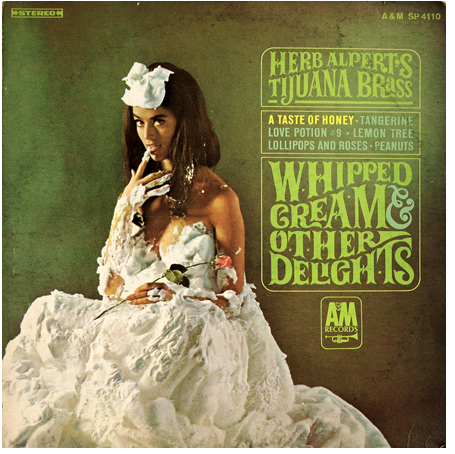
The oh-so-tempting and sweet-as-honey Dolores Erickson.
As I’ve said before, my dad was a Frank Sinatra-Jackie Gleason-Nat King Cole-type of guy, so the theme for this party was “Swingers.” But that night, Dino and Sammie got lost in the brassy swagger and slightly-sleazy come-on of Herb Alpert and, of course, Dolores. He must have gotten four or five copies of that album as presents. Which is how I managed to squirrel away one of the extras for closer perusal beneath the ping-pong table that night. And what a night it was. In flannel pj’s, laying on my stomach, I watched my parents dance—a rare thing. My dad wore a metallic blue suit—even rarer—and my mom was in heels and stockings and they laughed and held tight to each other and no one would ever have imagined that in a very short period, these cool times and their marriage would both be over. Not even me.
In between “A Taste of Honey” and “Whipped Cream” (which went on to an inglorious future as the theme song for The Dating Game) my dad, playing bartender, made highballs—that’s what he called them, never cocktails, even if they weren’t served in tall glasses—for anyone who was too hot and sweaty from dancing. Since this was something of a costume party (everyone was supposed to come dressed up like their favorite character from the Rat Pack), the drinks were special: cooling gin fizzes, tart daiquiris, and exotic sazeracs, a drink he’d learned about while in the military.
Like Dolores Erickson, those mostly-forgotten cocktails are an indelible part of my memory of that night, a buoyant summer bash of sharkskin suits and spaghetti strap dresses, brassy horns and marimba band sounds. The next year, everything changed. Levi Strauss started selling bell-bottom blue jeans, Nat King Cole died, the first hippie festival was held in Golden Gate Park, and my parents separated. The following summer, on his birthday, my dad took me to see the Beatles second movie, Help!
“I just don’t get it,” he said as we came out of the movie theater into the harsh light. But I did. The British were coming. Herb Albert was fleeing into the sunset in a Tijuana taxi.
Often times, as people age, they become frozen in a particular period of time. Somewhere along the line, they stop changing their hair-do, get stuck listening to the same music, wear the same style of clothes. For both my parents, I think that time was 1965. Ten, even twenty years later, when I’d go over to my father’s house for dinner, he’d put on Whipped Cream and sit in his La-Z-Boy recliner, tapping his feet to “Bittersweet Samba,” and the image of that avocado green album cover with the dark-haired whipped cream beauty with a single finger to her lip would immediately come back to me. My dad would look at me and smile and I’d wonder if he was thinking the same lascivious thoughts I was about brown-eyed Dolores.
Somehow, whenever I came over to visit, he’d ask me to make him a sazerac. He said no one else could make it as good. Not even him. Even at my own wedding reception, he asked me to go behind the bar, in my tuxedo, and make him “a proper highball.” It wasn’t a highball at all; it was a cocktail, one that, for me, will forever be associated with a steamy August evening back in the Mad Men era; a cocktail made with a dash of bitters and a twist of lemon that, nonetheless, always leaves me thinking of Dolores and a taste of honey.
Sazerac
In New Orleans, this is usually made with a local anise-flavored liqueur called Herbsaint, but if you don’t want to make a trip to the Big Easy, you can use Pernod. Pour 1/2 teaspoon of Pernod into an old-fashioned glass, swirling it around to coat the glass. Discard excess and fill with ice. Fill a cocktail shaker with cracked ice and add:
– 2 oz. single batch bourbon (like Maker’s Mark or Knob Creek)
– 1/2 oz. simple syrup
– 2 dashes Peychaud’s bitters
Stir all ingredients and strain into the ice-filled rocks coated with Pernod. Garnish with a lemon twist.

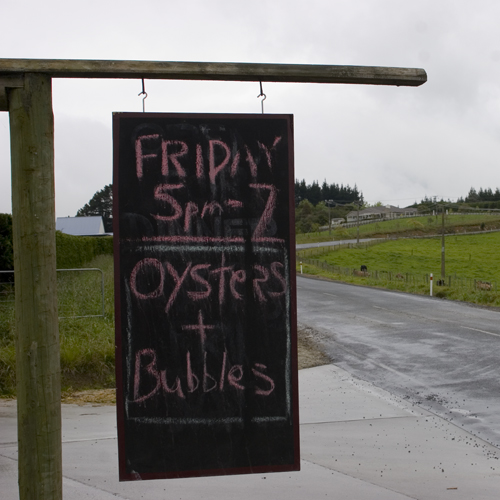
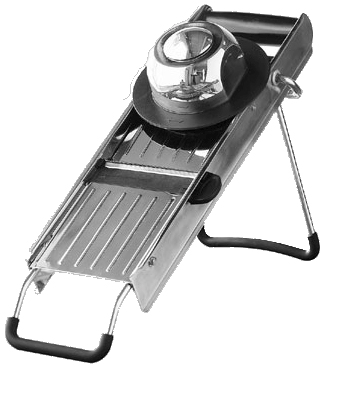
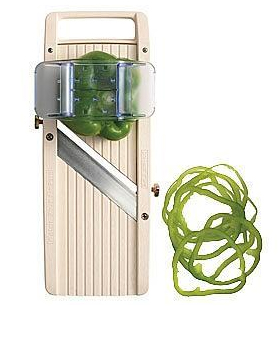
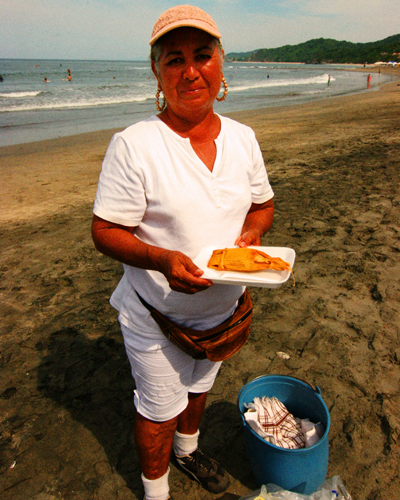
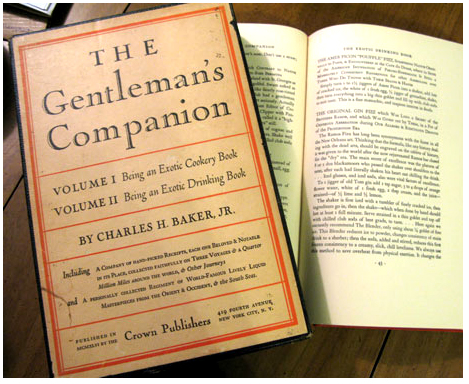
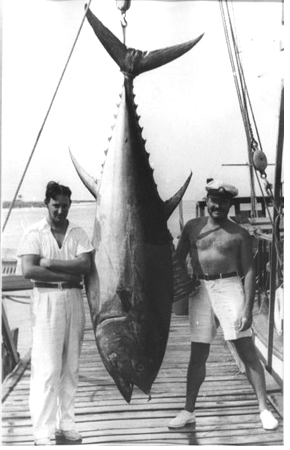

Recent Comments